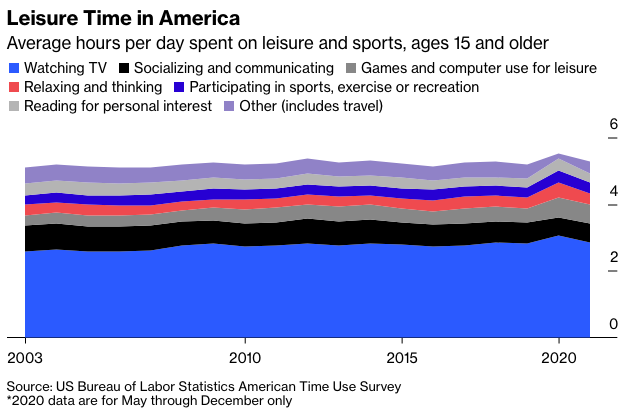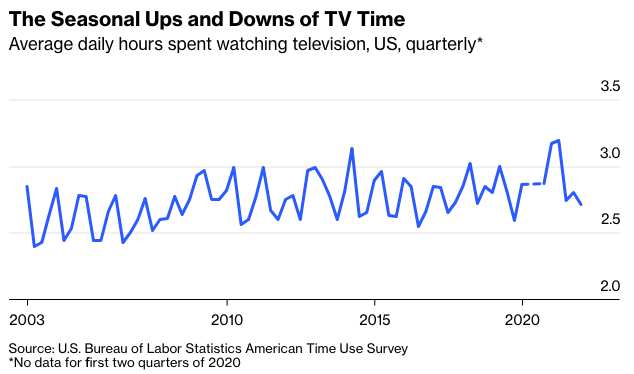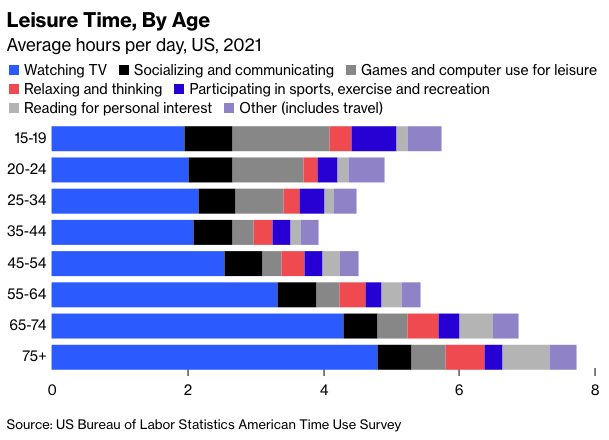Along with some less-welcome changes, the Covid-19 pandemic brought many Americans a respite from time pressures. Average time spent sleeping went up by about 10 minutes a day in 2020, and time devoted to leisure and sports activities went up by about 32 minutes, according to the American Time Use Survey conducted by the Census Bureau on behalf of U.S. Bureau of Labor Statistics.
Recently released data for 2021 show an apparent reversion toward (though not all the way) to pre-pandemic norms:

There are some comparability issues here because the 2020 survey was interrupted by the onset of the pandemic. There are seasonal differences in leisure activity and the BLS ended up publishing only the results from May through December. But they’re not big issues: The 2019-2020 comparisons in the first paragraph are based on May-December data from both years, and quarterly numbers available for TV-watching time show a big winter 2020-2021 peak and then a falloff that actually left TV time lower in the fourth quarter of 2021 than in any fourth quarter since 2007—a shift that has left its mark on the stock prices of Netflix Inc., Walt Disney Co. and others.

A more serious problem with these time-series statistics, in particular the modest uptrend in leisure time they were showing even before the pandemic, is that the U.S. population keeps getting older. Old people have a lot more leisure time than everybody else, which could be driving the rise in overall leisure time.

Sure enough, if you separate things out by age group it’s not clear that there has been any increase in leisure time since the first time-use survey in 2003. Of the smaller assortment of age groups for which the BLS offers historical data, half (those 25-34, 55-64 and 65 and older) have seen an increase in leisure time since then and half (15-24, 35-44 and 45-54) a decrease. Most of the changes have been so small that they could just be sampling error, which is why I’m not bothering with a chart. This is not the case, though, for the group that has seen the biggest decline in leisure time since 2003, and had the least to begin with.
I speak here of my fellow Americans ages 35 through 44, who are often parents of young children and at pivotal, high-stress stages in their careers. I was among this group in 2003 and remember feeling overwhelmed pretty much constantly. It gets better, I swear: Measures of subjective well-being indicate that, in the U.S. and many other countries, it bottoms out when people are in their mid- to late-40s and then begins a long rise.
In the meantime, though, the time pressures on Americans 35 to 44 seem to keep getting worse. They have lost more than 16 minutes in average daily leisure time since 2003, with the pandemic providing no real respite.









